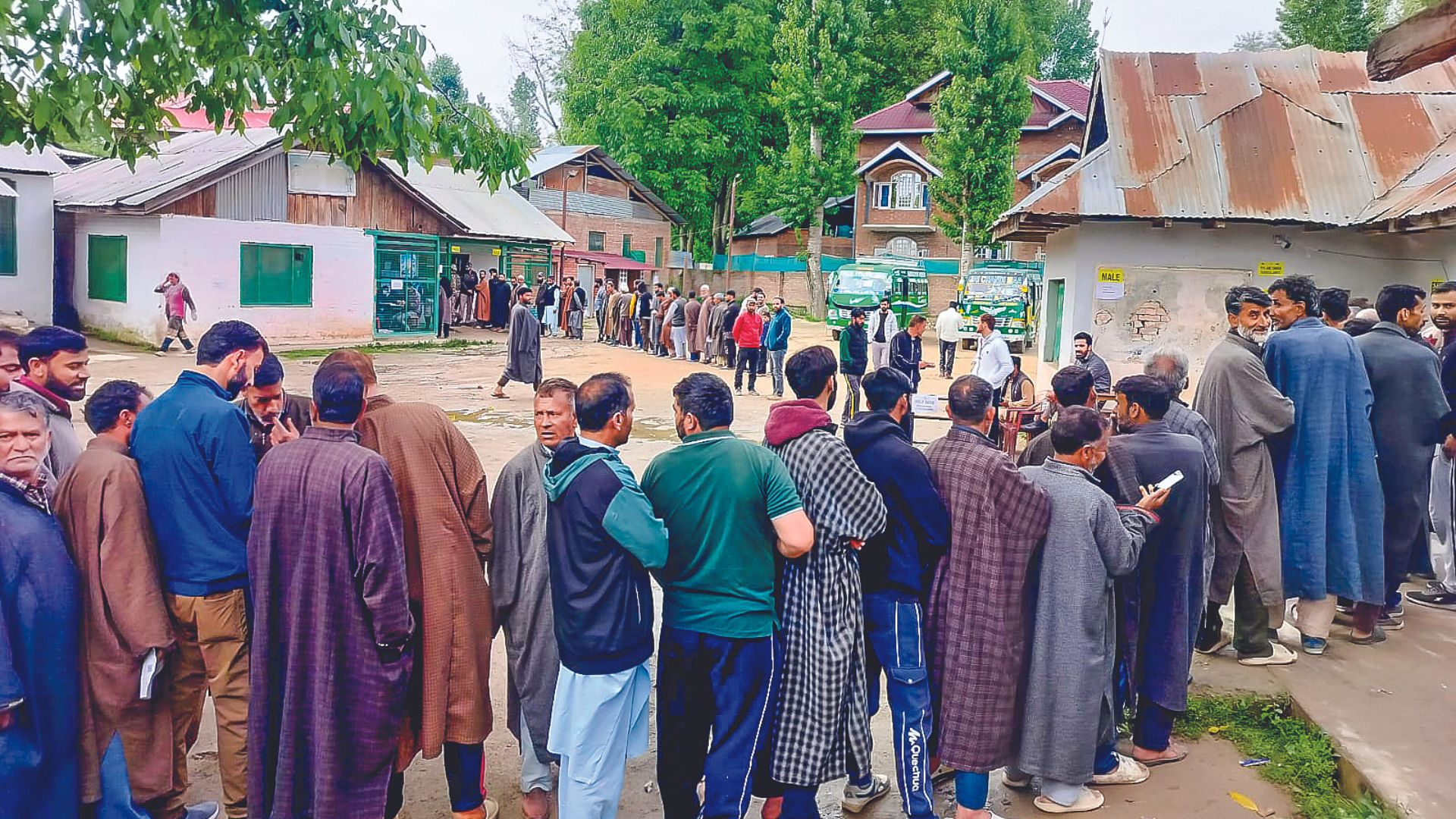
One of the many high points of the ongoing general elections is the voting in Kashmir valley, which started in the fourth phase of the elections, with Srinagar going to the polls last Monday. The constituency saw its highest turnout since 1996—38.49%—according to the latest figures given by the Election Commission of India. In 1996, it was 40.94%. Given that the turnout was 25.86% in 2014 and 14.43% in 2019, a near-40% turnout is a big achievement, and a direct consequence of the abrogation of Article 370 in 2019, which started the process of the mainstreaming of Kashmir. In fact, the turnout reflects the changes we have been witnessing in the Valley. There was a time when Srinagar would go dark after 6 pm, as officegoers returned home. People stayed indoors. Fear was palpable in the air. All that has changed. A place like Srinagar’s Lal Chowk, which had become synonymous with unrest, is where the Tricolour flutters today and people come for evening walks and shopping. Srinagar has got a nightlife now. Stone pelting has disappeared from downtown Srinagar. Tourists are pouring into the valley. Incomes are skyrocketing. All this is testament of the great work that is happening in the valley.
There were no election boycott calls by the separatists, no protests, no violence this time. This was a huge contrast to the time when the separatists used to issue a hartal and protests calendar, which brought the whole valley to a standstill, sometimes for months. Fear for their lives wouldn’t allow the Kashmiris to step out for voting. It was believed that those who stepped out were party workers who were voting for their respective party candidates. With a near-40 voting percentage, Kashmir has proved that it is the common Kashmiri who has voted this time, which shows that if the right conditions are created, even people in Kashmir are more than eager to participate in India’s biggest festival of democracy.
Amidst all this, visuals of voters in the valley thronging the polling stations has unnerved a section of activists and journalists, who have turned the narrative of “oppressed Kashmiris” into an art form. Many such people who make a living out of taking the “broken tales” of “conflict zone” Kashmir to foreign shores at the invitation of rights groups, and indulge in anti-India propaganda in front of foreigners, are trying to explain the large turnout by saying this was a mark of protest. Apparently, people have come out in large numbers because they are protesting the removal of Article 370; that they are voting for National Conference and People’ Democratic Party (PDP) because these parties are for the restoration of status quo. When the truth is that, like in the rest of the country, Kashmir’s voters are voting for issues such as development, progress, education and employment. By calling these “protest votes” the activists are trying to peddle their fake narrative of Kashmir being another Palestine, to their global audience. Moreover, what a disappointment such a voting trend must have been for Pakistan, which has destroyed its economy and society, while trying to take Kashmir from India.
In fact, this narrative about the vote in Kashmir being a “protest vote” has been picked up, as if on cue, by many analysts and opinion makers known to be opposed to Prime Minister Narendra Modi, and is being repeated ad nauseam. It is surprising that none of these narrative-spinners realise that Article 370 is history. No political party will ever be able to bring 370 back, whichever side of the spectrum that party may belong to. There is a reason why Rahul Gandhi is avoiding commenting on Article 370. While as an Opposition politician he cannot praise the abrogation, as that would amount to praising Narendra Modi, he cannot even oppose it, for that would be a vote killer for him. Any suggestion of bringing back 370 will be political suicide.
This is not to say that everything is normal in Kashmir. Things can still get derailed if Kashmir is not nurtured. This is to say that a lot has happened in the last five years. Development has come to Kashmir. Industry and investments are coming to a place that, according to locals, had got stuck in a time warp. Generations of Kashmiri politicians did nothing for the people, but continued to thrive under the benevolent protection of New Delhi. Much of the alienation and radicalisation of a section of the valley population has its roots in this. Now that Kashmir has a future, it must not be allowed to return to the sinkhole from where it’s emerging. It’s for this future that Kashmiris stepped out to vote.